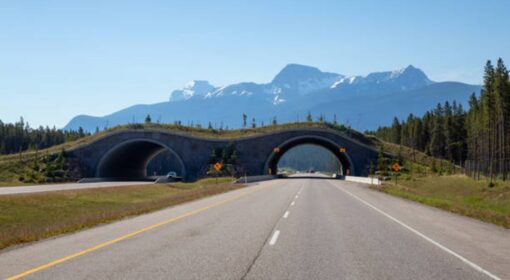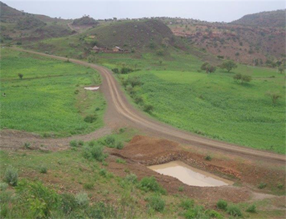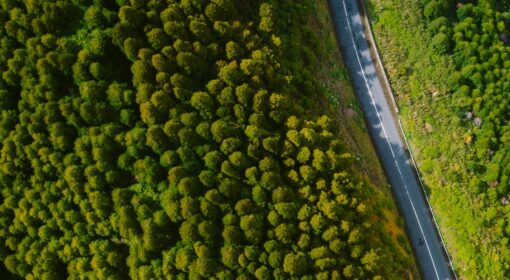By Ellie Yu

Road construction and transportation have a considerable environmental impact due to their extensive use of materials and energy, along with the generation of emission and pollution as well as their impact on biodiversity and land and water management. To address this challenges, various sustainability aspects are to be integrated into highway development and conventional roads have to become ‘green roads’. The term ‘Green’ encompasses a multitude of these approach aimed at reducing emissions and waste throughout the life cyclemanagement for and with roads, preserving biodiversity and quality of life. encompassing its design, construction, operation, and maintenance phases. By adopting such a comprehensive approach, the goal is to minimize the environmental footprint and promote more eco-friendly and nature-positive practices in the transportation infrastructure sector.
In China, the concept of green highways was initiated in 2013, and three years later, the Ministry of Transport issued guidance on green highway construction [1]. The guidance emphasized the need to advance green highway technologies, and to develop standards and specifications for green highways. It also called for the improvement of evaluation criteria for green highway construction and encouraged local areas to establish their own green road evaluation standards tailored to regional characteristics. The aim was to promote comprehensive green road construction across China. Currently the concept of green highways has evolved to become more comprehensive and well-defined. As of 2023, there are thirty-three designated demonstration projects for highways planned to be constructed with a focus on resource conservation, ecological and environmental protection, standardized construction processes, road service improvements, and innovation-driven approaches.
Guangji expressway (广吉高速公路) is one of the demonstration projects located in the southern region of the Yangtze River, covering a length of 189 km from 2016 to 2019. It has evolved into a crucial transportation hub, promoting tourism development in the area. This expressway traverses several valuable ecosystems and environmentally sensitive areas. Additionally, the construction area hosts over 40 ancient camphor trees. To deal with these challenges, the green measures focused on optimizing land use, reducing soil erosion and pollution, and maintaining vegetation coverage.
Some of the green measures implemented throughout the entire life cycle of Guangji expressway [2]:
- Accountability: A dedicated soil and water conservation group was established at outset of the project. Each department involved in the project was assigned clear responsibilities, as per relevant standards, ensuring the proper implementation of soil and water conservation measures.
- Green procurement: Environmental protection and soil erosion mitigation requirements were integrated into tender documents. Contractors and suppliers were obligated to adhere to these requirements during both construction and operation phases.
- Avoidance of constructions in environmentally sensitive areas: Routes were thoughtfully selected to minimize environmental impact, bypassing mining areas, sensitive zones, and crop areas.
- Erosion monitoring: Third-party institutes or laboratories were tasked with monitoring soil erosion in disposal sites, borrow pits, road embankment slopes, and road cut slopes. Regular consultation reports were required to assess the current status of soil erosion.
- Optimizing land use: Land used temporarily for construction was considered for permanent use during the construction phase, reducing overall land use. For example, temporal construction sites initially designated for waste disposal were redeveloped to serve as parking lots and work zones for highway maintenance, making efficient use of these areas;
- Recycling wate: Approximately 120,000 waste tires were utilized in installing rubber asphalt pavement, covering a length of 70 km;
- Consistency with surrounding landscape: Roadside vegetation predominantly consists of native species like Chinese red pine, Schima, along with various grasses, flowers, shrubs, and trees, ensuring harmony with the surrounding landscape.
The Guangji Expressway in China stands as a good example of the successful adoption of green measures in highway projects. With the expansion of demonstration projects and the implementation of policies, these green measures will continue to evolve, becoming more sophisticated and seamlessly integrated with local characteristics including natural habitats and landscapes. This ongoing progression represents a positive direction towards even more environmentally conscious and context-specific infrastructure development.
- Yu, S., Li, J., and Feng, C. Research on the evaluation system of green highway in the whole life cycle of South China Mountain Area. in E3S Web of Conferences. 2020. EDP Sciences.
- Qin, X., Wang, N., and Li, G., Green Mountains and Clear Waters for the Benefit of the People: Practices and Highlights of Environmental Protection on the Guangji Expressway (Chinese). Subtropical Soil and Water Conservation, 2018(4): p. 58-60.
Part of series of blogs developed in support of the preparation of the Asian Development BankToolkit for Green Roads



